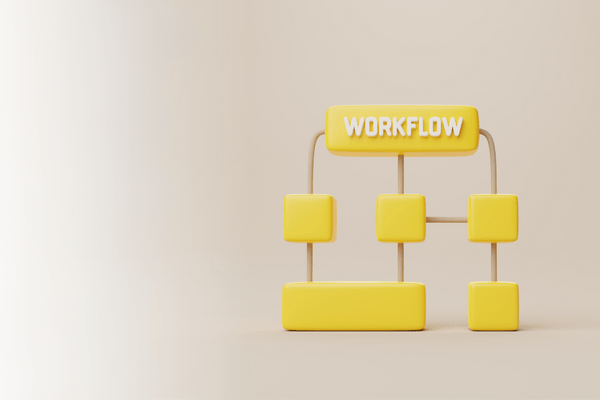How To Achieve Operational Excellence With Workflows

According to a recent report, organizations that operate with operational excellence,” …can achieve more up to 30% higher revenue growth and 50% higher productivity than their peers.” With numbers like that, it is easy to see why every organization should strive to operate with this level of efficiency. There are many ways that an organizations can tackle achieving this standard of operation.
In this article, we will review common challenges to operational excellence, and what are some essential areas of focus to overcome those challenges. As we dive deeper into the topic, we will explain how processes in your workflows can be one of the most efficient way to automatically align your team and eliminate inefficiencies.
What is operational excellence?
But first, what is operational excellence? Operational excellence was defined by Forbes as, “…a business strategy about delivering agile and high-quality products and services. However, it is not about reducing costs and increasing productivity. Instead, it is a culture of teamwork, problem-solving and leadership that brings about the desired results.”
To bring about that culture, teams need to be able to confidently make decisions to collaborate and get work done. To illustrate this point, we will demonstrate an example of how to manage project workflows in our PPM (project portfolio management solution). To give a quick overview, here is a video that explains what this looks like:
What prevents operational excellence?
There can be many things holding your organization back. But a few main ones include poor data or poorly organized data, communication and information silos, poor accountability or accountability processes, a lack of alignment and clear vision about the goals and intended outcomes for the work that is being done. Does any of that sound familiar?
Without a clear unified understanding of structure and processes, organizations can quickly and easily get sidetracked with work and initiatives that are not aligned with the organization’s greater purpose. Miscommunication and misunderstandings can quickly arise. So how can you prevent something like this happening to your team?
4 Essentials To Fostering Operational Excellence
According to a recent LinkedIn Article, here are four things you can focus on to improve efficiency but also the culture at your organization to achieve operational excellence.
- Establish your goals: Clearly define the objectives of your operational excellence initiative, outlining specific targets such as boosting efficiency, cutting costs, and elevating customer experience.
- Enhance processes: Identify and capitalize on opportunities to refine and streamline your operational processes, eliminating unnecessary steps and increasing overall efficiency.
- Harness technology: Invest in technological solutions that enable effective data tracking and analysis, empowering you to make informed decisions and enhance your operational processes.
- Prioritize continuous improvement: Instill a culture of ongoing enhancement by consistently evaluating and refining your strategies and processes, ensuring that operational excellence remains a continuous and evolving endeavor.
How your PPM Solution Can Help With Those Essentials
Crystalized visualization of your projects
Like it was stated above, having good data is necessary for any decision maker or team to make the right decisions and get the right work done to be successful. Whatever your current solution may be for viewing your project or portfolio data, you should have a tool that helps you see the whole picture at once. Select an option that doesn’t require more work to create a visual. Use a tool that makes it easy to see the data.
The easier it is to “see” the data, the easier and faster decisions can be made. And like it has been said, “a picture is worth a thousand words.” Stop wasting your time trying to create that image and choose a solution that will do that for you.
Standardized processes
When projects get more complex, and more team members are involved with those projects, it becomes easier for the project to become disorganzied and harder to report on status updates to stakeholders. Select a PPM solution that has a standardized process for each project’s intake and execution.
Also, make sure you select a tool that has features that make the decision making process easier like a built in approval process in the workflow and a prioritization feature that weighs the priority of the work that needs to get done.
Automations
Select a solution that allows users to input the stakeholders so when the status of a project is changed, the stakeholder is notified automatically. That way everyone is all on the same page with out having to manually message everyone about a status update change.
One Final Piece of Advice…
We have said a lot about standardization but one more important note is that your solution should be customizable to fit the needs of your unique workflows. If you find yourself using a tool that takes hours to produce the data visuals you need, licenses per user, rather than getting everyone access to automatically stay aligned, requires you to do dual data entry or use another tool to report and manually update stakeholders, or recommends workarounds that could easily done with automations that it doesn’t offer, then it’s time to find a better solution.
If the whole point of a PPM solution is to make your team efficient and operate with operational excellence, then that software should intuitively offer users built-in features like the workflow example that we provided from Proggio to save you time and resources to get more work done and reach your business goals faster.